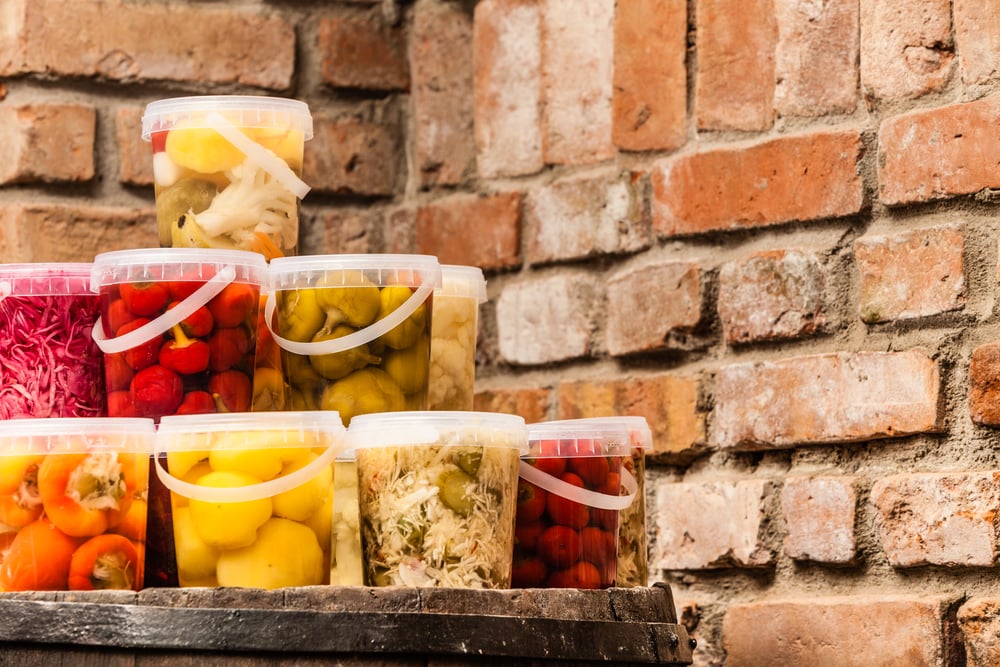Long before the convenience of modern refrigeration and technology, people had to get crafty when keeping their food edible. The motivation was simple – nobody likes to see their hard-earned harvest go to waste or, worse, have nothing to munch on when winter rolls in. This is where drying comes in…or rather, it came in 4000 years ago–the grandpappy of food preservation methods. This technique removes moisture from food, which breaks bacterial growth and mold. Think about sun-dried tomatoes or beef jerky – they’re not just tasty but triumphs of tradition that have stood the test of time. People laid out their foodstuffs under the blazing sun or by the fire, emphasizing patience as water slowly evaporated. It was a game of waiting, but the payoff? Long-lasting sustenance that could see a family through the leaner times with a little less worry on their brow.

Pickling: When Food Gets a Tart Transformation
If drying is food preservation’s old-fashioned uncle, pickling is its zesty aunt, bringing tang and punch to the dinner table. But it’s more than just flavor – pickling is about survival. Folks learned that by submerging their foods in brine or vinegar, they could halt spoilage in its tracks. This technique relies on the acidity of the pickling solution to create an environment where bacteria can’t thrive. Vegetables, fruits, eggs – you name it, and someone’s probably pickled it. They realized that this mouth-puckering process could extend the life of their foods while adding a new kick to their cuisine. It’s the ancient method where survival dovetails with a culinary kick, imbuing the food with bold, zingy flavors that are sure to wake up tastebuds from any hibernation.
Freezing: The Cool Kid on the Block
Let’s leap forward a few centuries, where the concept of freezing has risen from the icy tundras to become a staple in our quest for food longevity. The science behind it? Simple. When you freeze food, you turn the resident water into tiny ice crystals. These crystals pause any bacteria or enzyme activity, which means the food doesn’t deteriorate or lose its taste. Suddenly, the bounty from summer can be savored during the bleakest of winters. Freezing has pulled out the wild card in this preservation game, offering reliability with minimal fuss – that roast you made too much of? Freeze it. Those berries that were on sale? Into the freezer, they go. The sheer convenience offers peace of mind that’s hard to beat.
Emergency Food Kits: Peace of Mind on Standby
Now, let’s talk about the modern spin on these tried-and-tested food preservation techniques, particularly when it comes to emergency food kits. These kits exemplify the importance of having nutrition in all circumstances, safeguarding against the unknown with shelf-stable, ready-to-eat meals. Whether it’s a natural disaster, a sudden crisis, or just uncertain times, these kits harness the wisdom of our ancestors’ preservation methods, ensuring that you can be calmly nourished inside your sanctuary no matter what’s happening outside.
Linking Past and Present
The tale of food preservation is one of brilliance and resilience that spans eons and crosses cultures. It’s about human ingenuity–a testament to the collective will not just to survive, but to thrive. Drying, pickling, and freezing are not just kitchen techniques–they’re lifelines that have fed generations. They connect us to our past and remind us that, despite our fast-paced lives, we’re still subject to nature’s rules. These methods depict humanity’s unending dialogue with food and its preservation. Ensuring that, come rain or shine, the fruit of one’s labor can be savored for days, months, and sometimes even years to come.

